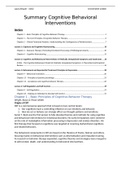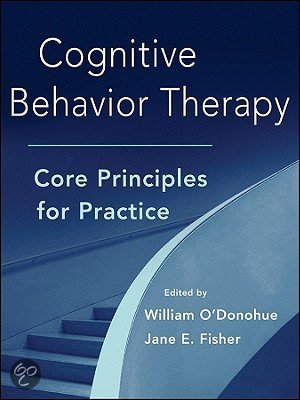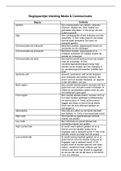Samenvatting
Samenvatting Cognitive Behavioral Interventions (6464CL03)
- Instelling
- Universiteit Leiden (UL)
• Chapter 1 of the Wright, Basco, & Thase (2006/2017) book; • Chapter 1, 2, 4, 6, 8, 9, 13 & 14 of the O’Donohue & Fisher (2012) book; • Additional literature posted with the lectures on Brightspace.
[Meer zien]














